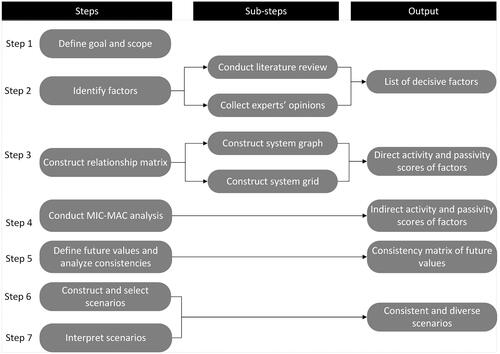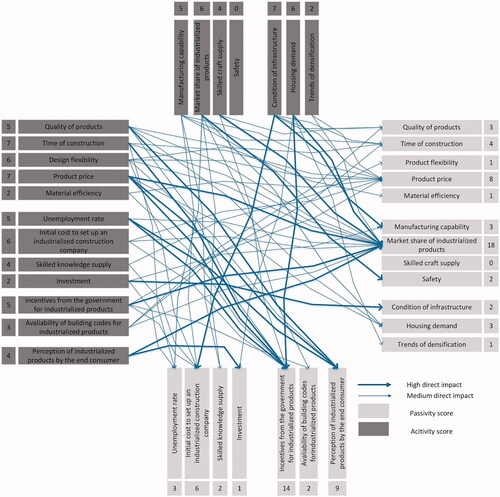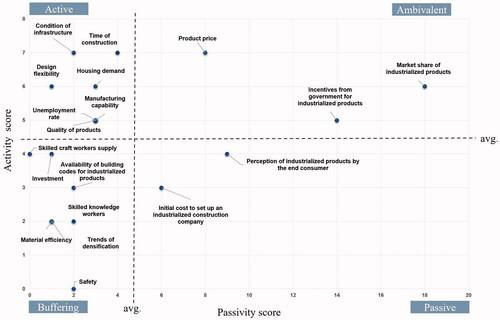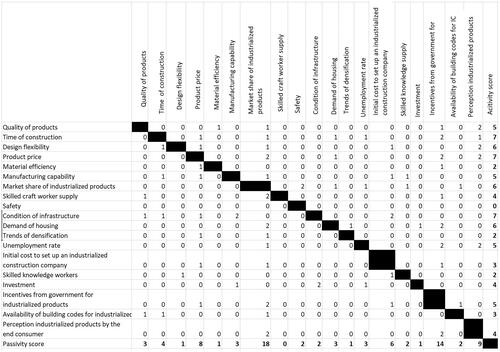Figures & data
Figure 1. Methodological steps in the Formative Scenario Analysis (FSA). Adapted from (Scholz and Tietje Citation2002).

Table 1. List of experts that participated in the study.
Table 2. Consistency ratings
Figure 2. The scenario selection process.

Table 3. The decisive set of industrialised construction adoption factors identified.
Figure 3. System graph of factors.

Figure 4. System grid of factors.

Table 4. Current and future values of factors.
Table 5. Selected scenarios and future values of factors.
Figure A1. relationship matrix of factors (0=no or very little direct impact, 1= medium direct impact, 2 = high direct impact.)

Figure A2. Consistency matrix of factors.

